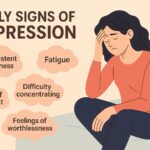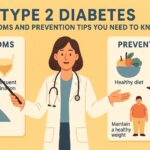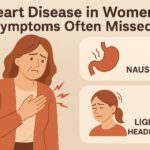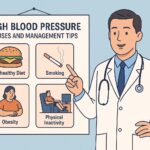What Are Vitamin D Deficiency Symptoms?
Vitamin D deficiency symptoms often go unnoticed until they start to impact daily life. From chronic fatigue to bone pain, this deficiency affects millions of Americans every year. If you live in a region with limited sunlight or spend most of your time indoors, you may be at risk without even knowing it. Fortunately, the signs are easy to recognize once you know what to look for — and even easier to fix with the right approach.
Why Vitamin D Matters
Vitamin D plays a vital role in supporting bone health, immune function, mood stability, and calcium absorption. Without enough of it, your body struggles to perform key processes, putting you at risk for serious long-term health issues.
Your body can produce vitamin D when exposed to sunlight, but factors like skin tone, sunscreen use, obesity, and age can affect how efficiently it’s made. It’s also found in small amounts in foods like fatty fish, eggs, and fortified dairy products.
Top Vitamin D Deficiency Symptoms to Watch For
Here are the most common signs that may indicate a vitamin D deficiency:
- Fatigue and tiredness — Feeling drained despite enough sleep can be a red flag.
- Bone and back pain — Vitamin D helps maintain bone density. Without it, aches and pains may increase.
- Frequent illness — A weak immune system often stems from low vitamin D levels.
- Depression or mood changes — Research links low vitamin D to increased risk of depression.
- Hair loss — While many factors can cause this, vitamin D deficiency is a possible contributor.
- Slow wound healing — Cuts and injuries may take longer to recover due to poor immune support.
- Muscle pain — Vitamin D plays a role in muscle function and inflammation reduction.
Who Is at Risk for Vitamin D Deficiency?
Several groups are more prone to developing a deficiency:
- People with darker skin — More melanin means less vitamin D synthesis from sunlight.
- Older adults — Skin produces less vitamin D with age.
- Those with limited sun exposure — Office workers, night shift employees, and those in northern states.
- People with obesity — Excess fat stores can reduce vitamin D circulation in the body.
- Individuals with digestive issues — Conditions like celiac, Crohn’s, or IBS can impair absorption.
How to Test for Vitamin D Deficiency
A simple blood test called the 25-hydroxy vitamin D test will measure your levels. Ideal blood levels range from 30 to 60 ng/mL. If your level is below 20 ng/mL, you’re considered deficient.
Ask your healthcare provider to order this test if you experience any of the symptoms listed above, especially if you’re part of a high-risk group.
How to Fix Vitamin D Deficiency Safely
Here are proven strategies to raise your vitamin D levels naturally and effectively:
- Get regular sunlight — Aim for 10–30 minutes of sun exposure several times a week, depending on your skin type and location.
- Eat vitamin D-rich foods — Include salmon, sardines, egg yolks, fortified cereals, and dairy in your meals.
- Take supplements — If natural sources aren’t enough, vitamin D3 supplements (cholecalciferol) are the most effective form.
- Pair with healthy fats — Vitamin D is fat-soluble, so consume it with meals containing avocado, nuts, or olive oil for better absorption.
How Much Vitamin D Do You Need?
Recommended daily intake varies by age, weight, and health condition:
- Adults under 70: 600–800 IU daily
- Adults over 70: 800–1,000 IU daily
- People with deficiency: 2,000–5,000 IU daily (under doctor supervision)
Always consult your healthcare provider before starting high-dose supplements to avoid toxicity.
Can You Have Too Much Vitamin D?
Yes. While rare, excessive vitamin D can lead to calcium buildup in the blood (hypercalcemia), causing nausea, vomiting, kidney problems, and confusion. Stick to recommended doses unless your doctor advises otherwise.
FAQs About Vitamin D Deficiency Symptoms
- Can vitamin D deficiency cause anxiety?
Yes. Some studies suggest that low levels of vitamin D may contribute to anxiety and mood disorders. - Are symptoms reversible?
In most cases, yes. Once levels are restored, symptoms like fatigue, muscle pain, and mood swings usually improve. - Can kids have vitamin D deficiency?
Absolutely. It’s especially important for bone growth and immune function in children.
Conclusion: Take Charge of Your Health
Recognizing vitamin D deficiency symptoms early allows you to take simple steps toward better health. Whether it’s a few minutes in the sun or adding the right foods to your plate, you can protect your bones, mood, and immune system. Don’t ignore the signs — act today and keep your vitamin D levels in the healthy range.







